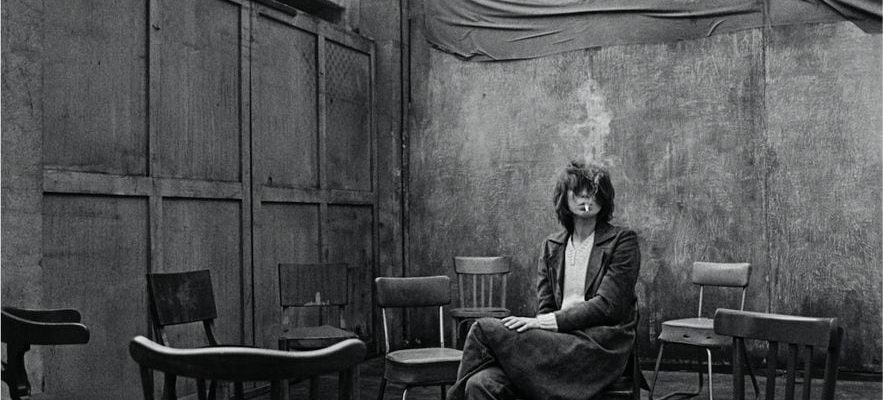Of her, we especially know the portraits that she took in the shadow of the stars of cinema, music or fashion, starting with the members of her family: her mother Jane Birkin, her sisters Charlotte Gainsbourg and Lou Doillon. Ten years after her tragic death in 2013, at the age of 46, the most discreet of the famous clan, already at the heart of a major retrospective at the Nicéphore Niépce museum in Chalon-sur-Saône this summer, is today at the poster of Quai de la Photo, in Paris, which exhibits, in two distinct chapters, 80 photos by Kate Barry. An exhibition presented under the title My Own Spacewhich curator Sylvain Besson, also author of a work of the same name (La Martinière, 2023), sheds light on by invoking “the unsuspected diversity of his work”.
For Kate, photographed as a child during the Birkin-Gainsbourg years, the image was not obvious. She was first a stylist, then, affected in her personal journey by the scourge of drugs, made a long-term commitment to the prevention of drug addiction, before beginning her first photographic research in the Breton peninsula in 1995. Many followed collaborations with the music industry (France Gall, Raphaël, Françoise Hardy, etc.) and reports for the French and Anglo-Saxon women’s press. There she surprises Laetitia (Casta), Sophie (Marceau) or Isabelle (Huppert) in improbable poses of abandon. “She liked to create constrained and hindered situations, and to capture this little discomfort in her lens,” remembers the second. We will also highlight the omnipresence of the chair, empty or occupied, a favorite accessory of his creation.
/ © Kate Barry
From 2002, Kate Barry dared to adopt another genre: landscape. Hers are so many disused spaces, imbued with disenchantment and poetry, even oppression, where she expresses, Sylvain Besson suggests, “the emptiness of human enterprises and the resistance of nature”. For those close to the artist, his sisters but also his only son Roman de Kermadec, these landscape compositions, inhabited by his voids and his fragilities, constitute his “real” photographic work. In fact, the photos seem to stick delicately to Kate Barry’s introspective obsessions. The images ofReal Estate Autobiography Essay, a work produced with the writer Jean Rolin in 2012, wonderfully illustrate, through a topographical stroll in the city of Dinard, this quest as modest as it is melancholy. The Bretillian resort appears damp and silent, as if deserted by its inhabitants.
Likewise, in his series Weeds, where she is framed in a red dress, sometimes without a face, she captures what we do not look at, like these ugly roots emerging from the asphalt. “How tenacious life is, it becomes inhabited characters,” she wrote.

Kate Barry, “Dinard”, 2011-2012.
/ © Kate Barry
Another little-known facet of the artist, even if it was a landmark in its time: the commission carried out for the 40th anniversary of Rungis in 2009, with the immense full-length portraits of the anonymous employees of the emblematic market, unaccustomed to light. Hidden people, “undecided” places, same fight. The marginal sites that Kate Barry photographed in Brittany, but also in Normandy or during her travels in Israel and Jordan, remain the necessary counterpoint to the human figures to, she said, “lose my bearings, lose this crossed gaze , that grateful look.”
.
